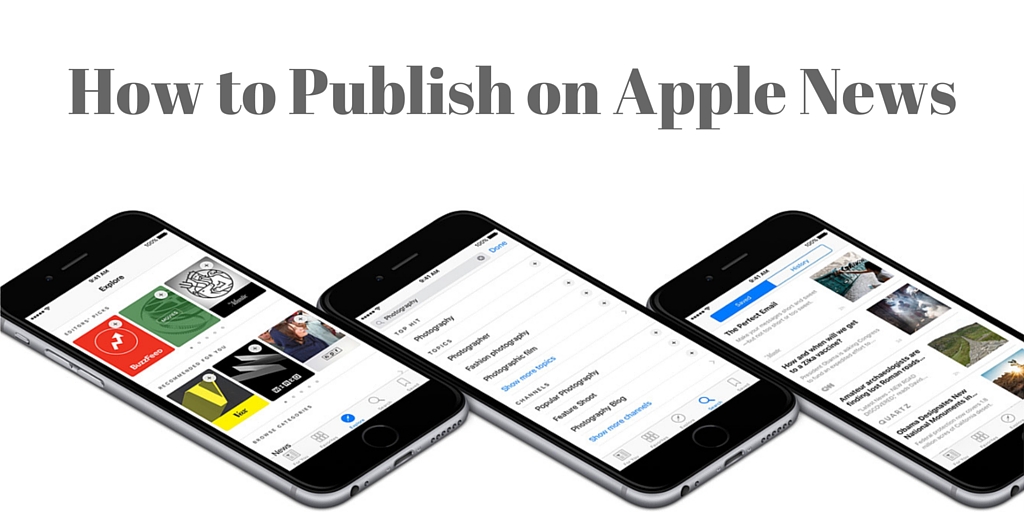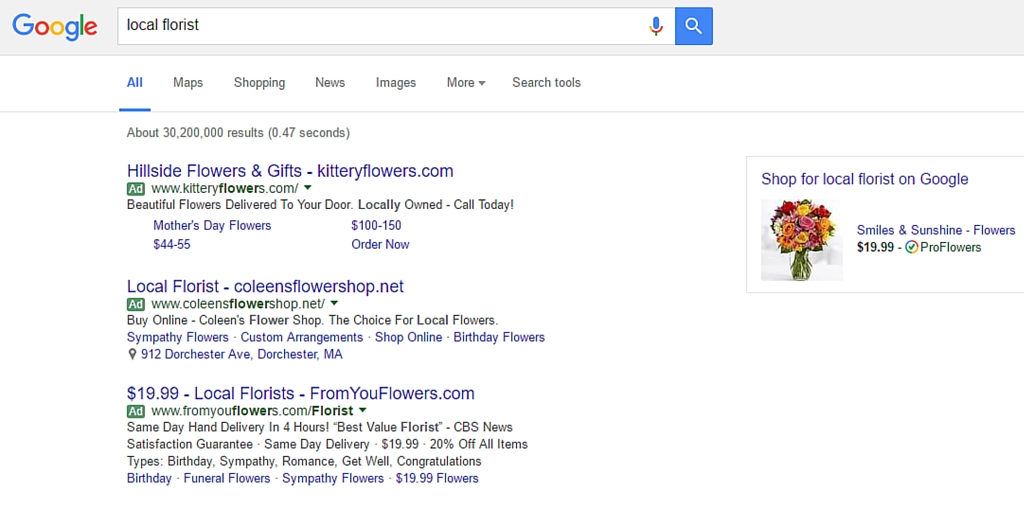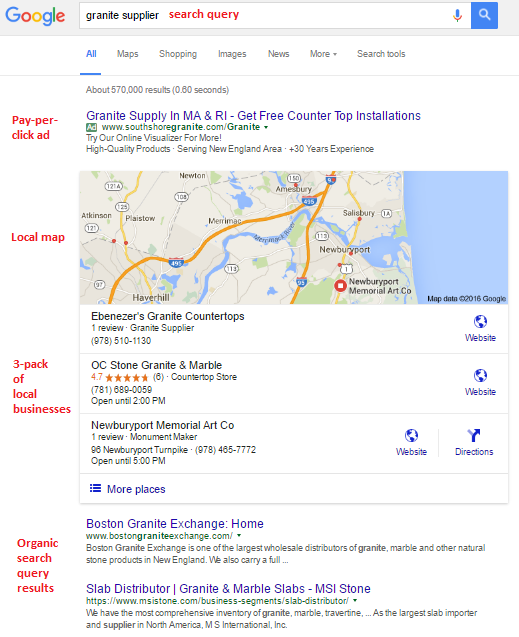
by Fronetics | Jul 28, 2016 | Blog, Diversity, Leadership, Logistics, Strategy, Supply Chain
In an interview with Kate Lee, Saunders discusses her career in the logistics industry and key issues within the supply chain.

Kelli Saunders is president of Morai Logistics.
The percentage of female CEOs in the Fortune 500 declined from 4.8% in 2015 to 4.2% in 2016. Canada, too, has realized a decline: 8% of the highest-paid executive positions are held by women, down from 8.5%. Research conducted by Gartner in April 2016 finds that for the supply chain industry, “the percentage of women in leadership positions decreases as the corporate ladder rises.”
It was a “fluke” that Kelli Saunders found the supply chain industry. More than 30 years later, Saunders is president of Morai Logistics Inc., an Authorized Agent of Mode Transportation. I sat down and talked with Saunders about her career and her perspective on women within the supply chain industry.
How did you find the supply chain industry?
It was a fluke. I was just out of college and needed a job. I found an ad in our local paper for a telemarketer, and I applied. I was hired as a telemarketing supervisor for a Canadian intermodal marketing company (IMC).
The man who owned the company focused on his employees. He taught us how to read a balance sheet and an income statement. He taught us the difference between added value and value added. And he taught us the industry. He had us climbing into trucks and railroad yards so that we could truly understand the industry.
When his wife sadly passed away, he decided to sell the company. He allowed six of us to become majority shareholders.
Fast forward sixteen years. The company has been bought and sold many times. I’ve stayed with the company through this process. Each time the company changed hands, my role changed, exposing me to different aspects of the business. Six years ago I bought the company back and now serve as president.
Your first boss sounds like he was a pretty incredible person.
He was. And now it is my turn. It’s my turn to give back.
I am a big believer in millennials. Their energy is contagious. I strive to be a mentor to them, and to let them know that they can dream big.
You’ve been in the industry for more than 30 years. What changes have you seen?
The industry is becoming more diverse, and more women are entering the industry. That being said, there is a still a long way to go. A big challenge is getting women and minorities to recognize that the supply chain industry is an option.
Tell me more about this.
Women don’t seem to recognize that there are incredible opportunities in the supply chain industry. The industry needs to do a better job at sharing what is happening — what the industry is all about. People think it is dull and boring; it’s not.
The supply chain industry is not just about getting things from point A to point B. The industry is an entire sophistication of infrastructure. There are so many aspects that we take for granted. Streamlining the chaos within the industry is incredibly rewarding.
How can this problem be addressed?
We need to get out and talk to more people. We need to go into the schools; we need to make connections and have conversations. Companies need to share their stories more widely. It is all about getting the word out there.
What advice do you have for people who do enter the industry?
Surround yourself with the best of the best. This is true when it comes to your colleagues, your employees, your vendors, your clients — everyone. This not only makes life more enjoyable, it has an impact on the bottom line.
Interestingly, 75% of the staff at Morai Logistics are women. This is not by design. By seeking out the best of the best, it just happened.
As a mentor, what advice do you give?
Dress for the job you want, not for the job you have. But I am not talking just about clothes. I am talking about your mental state, your body language, the quality of the work you produce. Visualize the job you want and portray that in all you do.
I also tell people to always be honest, respectful, and ethical. These characteristics are essential.
Getting the right product to the right place at just the right time is a complicated business. Kelli Saunders, CEO of Morai Logistics, understands the complexities and nuances involved in long term sustainability in the logistics industry. This is why the company she leads is the successful multimillion dollar, multinational business that it is today.
Kelli’s experience in the supply chain and logistics field is extensive. During her 30 years in the industry, she has been recognized for her strategic selling, relationship development, and management throughout North America. She started from her humble beginnings as a telemarketing supervisor for a Canadian 3PL provider to creating Morai Logistics Inc.
Since then Kelli has received numerous awards for her expertise in strategic sales. She has shown consistent impact in the industry by being awarded Salesperson of the Year numerous times, and was the former president of the Toronto Transportation Club. As a certified diversity supplier, her company has received WeConnect Canada’s Doing Business International Award and WBE Canada’s Doing Business Award as a woman-owned business.
Aside from assisting her clients with services including warehousing, management consulting and technology services through Morai Logistics, Kelli’s drive also shines through in her other passions.
She is an active member of the Women Presidents Organization, WeConnect International, and WBE Canada. Kelli strives to inspire women by telling her story and sharing her lessons at talks to support fellow female entrepreneurs. She also takes time to enjoy spinning, running, golf, and travelling. Her motivation and drive shows in her company’s performance and inspires her team to succeed.
Related posts:

by Fronetics | Jul 26, 2016 | Blog, Content Marketing, Marketing, Social Media, Strategy

Your business should be on social media showing buyers that you know what they want and that your business can provide it.
Once again B2B buyers reported that their purchase cycle has increased since last year. That’s in part because they are scrutinizing potential vendors more closely than ever before. Buyers overwhelmingly reported spending more time conducting research (80%) and using more sources to investigate purchases (73%).
You may be surprised to learn that one of those sources is social media, more often than not. More than half (53%) of B2B buyers report turning to social media to make buying decisions. What’s more, more than a third (34%) say they are spending more time this year than last using social media to research vendors and solutions.
Social media should be a critical component of your lead generation and nurturing strategy. Your business should use these platforms to prove that you understand what buyers are expecting from your brand. The 2016 B2B Buyer’s Survey Report found that today’s B2B buyers expect:
- Timely responses to messaging: Demonstrating a timely response to questions helped make the sale 98% of the time.
- Strong knowledge of the company and its needs: Personalization ranked as the second most influential reason a buyer chooses a specific vendor. When researching potential products, 64% gravitated toward companies that demonstrated “a stronger knowledge of our company and its needs.” A whopping 84% chose a vendor that could solve one of their pain points.
- Clear demonstration of ROI: Buyers reported conducting a more detailed ROI analysis before making a purchase. Vendors who can demonstrate how customers will receive their return on investment have a clear advantage. In fact, 90% of businesses that do this make the sale, according to the study.
- Speedy and easy delivery: “Deployment time/ease of use” skyrocketed from 49% in 2015 to 83% this year, leading the ranks as one of the most important variables that can set you apart from your competition. Buyers not only want it quickly, but they want a simple and easy buying process.
Which social media platforms do B2B buyers use most in their research?
The B2B Buyer’s Survey found that buyers primarily are using three social tools to conduct their research.
- LinkedIn is reportedly the most impactful to the research process. (81% said it was very important or somewhat important.)
- Blogs came in second, with more than a third of buyers (37%) ranking it very important.
- Video sites like YouTube and Vimeo are third, with 60% of respondents ranking them very important or somewhat important.
Want your business to connect with the 2.3 billion worldwide social media users? Get Fronetics’ free social prospecting workbook to learn how to use these platforms to generate new leads and sales for your business.
Related posts:

by Fronetics | Jul 25, 2016 | Blog, Content Marketing, Logistics, Marketing, Strategy, Supply Chain

Get your news in front of the one billion iOS users with this step-by-step guide to publishing on Apple News.
Do you use Apple News? If you have an iOS device (iPhone, iPad, or iPod Touch) and have upgraded to iOS 9 or beyond, the app is preinstalled.
Users love the easy-to-read interface and the fact that they don’t have to download a number of different third-party news apps. That’s because Apple News aggregates content from various media outlets, from the New York Times to local blogs, based on user preferences. You can refine what news you see by choosing your preferred publications and topics, which are as general as politics or as specific as the Chinese economy.
There are a number of topics and channels relevant to the supply chain. From supply chain management and automotive logistics to packaging news and sustainable brands, Apple News is an excellent source of content for companies in the industry.
Here’s more good news: Anyone can publish on Apple News. That means your business can distribute your content through this platform with the chance to reach the more-than-one-billion iOS users around the globe.
Signing up as a publisher is simple. Here are four easy steps to get started.
1) Sign into iCloud.
Go to https://www.icloud.com/#newspublisher and enter your iCloud login details. You can quickly create a free account if you don’t have one already. Click “Continue.” Note that you’ll need to agree to the End User License Agreement.
2) Set up your channel.
Complete details about your publisher name, contact info, and channel name. As a publisher, you can have multiple channels, each representing a different publication (such as a blog and a newsletter). After set up is complete, you can add a new channel by clicking “Create New Channel” and entering publisher and channel info.
Channel content is divided into sections. Your default section will contain the main content of your channel, but you can have up to 25 other sections to organize your content by topic or type. Apple suggests that 6 to 8 sections is optimal.
3) Upload your logo.
Upload a PNG file (smaller than 2 MB) of your logo that will be used throughout News to identify your content.
4) Select a publishing format.
You must choose between RSS feed or Apple News Format, which optimizes your content for iOS devices. Other benefits of Apple News Format include the ability to create articles in Publisher, add team members, get analytics, and earn revenue through iAd.
Once you submit all of this information, Apple will review your information and get back to you before your channel launches officially.
Learn more about publishing on Apple News.
Related posts:

by Elizabeth Hines | Jul 21, 2016 | Blog, Logistics, Strategy, Supply Chain, Talent

A veteran recruiter explains where the supply chain talent shortage is headed and how companies can overcome the challenges.
A recent report on the supply chain talent gap draws a sobering conclusion: The supply chain management profession finds itself in crisis. Unless you do it right, attracting and hiring skilled professionals can be challenging.
Deloitte’s third annual Supply Chain Survey, released last year, also states: “Many organizations are confronting critical shortfalls of talent. Years of headcount reduction, training-budget cuts, and the retirement of highly skilled individuals have hollowed out the ranks of veteran professionals.”
The Deloitte findings are echoed in another report by the Haslam College of Business at the University of Tennessee. While the driver shortage is well known, the report maintains the talent gap encompasses every level of supply chain management and is likely to grow worse as baby boomers retire.
So what is an organization to do? How can you become better prepared and make your search for talent more effective?
Few people are better positioned to answer these questions than Rodney Apple, founder and president of SCM Talent Group. With almost 20 years of experience as a supply chain recruiter, he has filled more than 1,000 supply chain positions ranging from executive-level at Fortune 500 companies to leadership and staff-level roles across large networks of manufacturing and distribution facilities within the United States.
We sat down with Apple to get his thoughts on the realities of the supply chain talent drought.
EBN: What is the status of the supply chain shortage from your perspective?
Apple: I work with a lot of companies in key industries across the supply chain, from junior to C-level positions. Here’s what I’m seeing: It’s not getting any better. If you break it up into job level, entry-level positions tend to be less challenging to fill since more universities are now offering supply chain degrees. Supply chain students at Michigan State University, which offers the top-rated program, can count on multiple offers and interviews before they even graduate. The same thing goes for Penn State, University of Tennessee, and other universities with top-tier supply chain programs.
Middle management, let’s call it junior to mid-level, that’s where companies are struggling; that’s where you find the bulk of people doing the work, and that’s where most of our searches are. It really is about sheer numbers, a generational issue. At the executive level, enough people have risen up, but I’m concerned that as baby boomers retire, it could create a problem in the near future.
Which positions tend to be the most challenging to fill?
Junior-level positions, those who have between one to four years of experience. When you land your first job out of college, you keep your head down and get immersed in the job that has to be done. You’re not actively looking for a new job. So you really have to do a lot of direct sourcing to find the analysts, engineers, inventory managers, and planners and sell them on why they should make a career move at this stage of their career. They are not in management but doing tactical, analysis kind of work. Those are the most challenging positions.
At what point do companies ask for your help?
Small and medium-sized companies often come as soon as a position needs to be filled since they don’t have dedicated resources for recruiting. If they have tried themselves and the search has been unsuccessful, the need is urgent by the time they come to us.
What challenges do companies run into when trying to recruit talent?
When you look at the supply chain function, it’s typically the most complex, diverse, and challenging. Unlike recruiting for clear-cut, core corporate functions such as IT and Finance, the supply chain sector will yield a much greater variety of job profiles. Add the complexity of different job levels and geographic factors that may involve distribution centers and plants spread out all over the country, and you will see why it can be challenging to find the right fit.
Companies also tend to understaff or undervalue the supply chain recruiting function. Coupled with a lot of internal movement, from the corporate office to the field and back, it’s like a game of musical chairs — you’re always backfilling internal movement. If you’re also looking for a high-demand skillset, it can be similar to finding a needle in a haystack.
How should a company prepare to increase the likelihood of a successful search?
First of all, you need to up your game when it comes to finding and sourcing candidates. You have to master the intake process. Before you even post a job opening, sit down with the hiring team or manager. You have to truly understand your company’s unique value proposition, selling points, culture, and what makes it exciting to work for your company. Then, you have to gather information on what I call the supply chain footprint; you have to understand the company’s organizational structure — the number of plants, warehouses, key challenges, key opportunities, key projects — and look at its size, scope, and complexity, including the process, system, and talent.
Next, you have to understand the position you’re trying to fill: the selling points, key deliverables, key challenges, key traits, and so forth. Use that information to build the position profile. A lot of companies start with the job description and fill it with skills and qualifications, and that is not the best way to go about it.
What’s the next step?
You take that information and sit down with hiring team to develop what I call an omnichannel sourcing strategy. There are a lot of channels to tap into. Many make the mistake of thinking the act of posting gets the job done, but you can never just sit back and wait. You may be able to get away with that if there’s an abundance of talent in the marketplace or if you’re a marquee employer, but in the supply chain you have to employ other sourcing tactics, which could include proactively reaching out to universities in the region and even nationally that match up with people in the workforce.
You also need to direct source across different channels. Come up with a targeted list not only of industries, but of companies who may employ the type of talent that you’re looking for. You don’t always need to shop in same industry because supply chain tends to be a transferable skillset, especially in logistics, procurement, and inventory planning. Other channels not to be left out include LinkedIn, Google search strings, top supply chain associations, membership directories, and employee referrals — you want to have strong referral programs to allow people to easily share job opportunities with their networks and potentially build an internal resume database if you have frequent openings.
What part of the search process tends to be forgotten?
When you’re a smaller company, you have to understand your unique value prop. It’s critical that you find a candidate who’s looking for the same work environment that you offer; I call it the ‘motivational fit.’ You may not want to source someone from a Fortune 500 who’s used to robust process systems, organizational structures, volumes, scope, and immense complexity.
Look at companies in your own range. Can you find people who want to continue working for similarly sized companies with similar challenges and opportunities? You may want to engage search firms if you only have a few openings to fill per year as it costs less than employing a full-time recruiter. Every company needs to figure out what talent acquisition resources they need from a people, process, and systems/tools perspective in efforts to proactively hunt people down because that’s what it takes to land top supply chain talent these days.
What can you do to make it last?
Make sure you have a strong onboarding program. Don’t just throw the person into the fire. On the onset, establish goals and expectations. The new hire should understand what needs to be accomplished and outline key deliverables, projects, and performance expectations. This is where management and leadership come in to make people successful, especially in a smaller company. Most companies are doing a pretty good job in this area with mentorships, additional training, courses, and so on, to help the employee reach his or her career goals.
Some companies are also moving away from the rigid once-a-year performance review to more real-time, on-the-spot, feedback. Everyone wants to advance. If your company requires everyone to be in a position for 24 months before they can even apply, you run the risk of losing them. In general, you should be more flexible how you move talent throughout the organization. It can do wonders.
What is your experience when it comes to looking for supply chain talent? What do you consider to be key steps to success?
This article originally appeared on EBN Online.
Related posts:

by Fronetics | Jul 20, 2016 | Blog, Content Marketing, Marketing, Strategy

AdWords’ upcoming updates will make it easier for local companies to earn the top spot on local search, which can drive significant new business.
Google AdWords has made it easier for local businesses to get their names in front of people searching for products and services like theirs. The update involves changes to the so-called “3-pack,” or the listing of three related local businesses on a search results page. It’s also known as the local pack.
Let me explain: When you use Google to search for a product, service, or provider, a map appears in your search results overlaid with three nearby businesses related to your search query. For example, I searched for a “granite provider,” and got the following results:

There is a pay-per-click ad above the map, followed by three organic listings (the 3-pack), and then the organic results of the search query.
Many consumers rely on the 3-pack to discover businesses in their area that offer the products and services they are seeking. And businesses get the benefit of many additional leads and customers when they appear in the 3-pack. This can be particularly significant for small businesses.
Moz conducted an thought-provoking experiment last August (when Google reduced the number of businesses listed below the map from seven to three). Users were instructed to conduct a search query, and Moz tracked where they clicked. The results were as follows:
- 44% clicked on a local businesses listed in the 3-pack
- 19% clicked on one of the pay-per-click ads above the map
- 29% clicked on an organic result below the 3-pack
While the experiment isn’t totally representative of users who are searching for local providers — given they were provided a search query — it does suggest that users are more likely to click through to businesses appearing in the 3-pack than elsewhere.
How can I get my business in the 3-pack?
Here’s where things get really interesting.
Currently, businesses who are aware of this phenomenon compete for these three coveted spots by spending lots of time, money, and effort optimizing their pages and outside factors (such as listings in local directories) to improve their chances of ranking in the 3-pack. Needless to say, small businesses with limited resources and know-how — those that could benefit most from appearing in the 3-pack — rarely have the opportunity.
But this is about to change. Google has been hinting at plans to include ads in the 3-pack. At a recent marketing expo, an executive confirmed that the team had been testing different variations of a reinvented 3-pack. He explicitly mentioned both one ad/two organic local listings and one ad/three organic local listings but noted testing was still underway.
Either way, businesses advertising in AdWords will soon have the opportunity to appear as the first listing in the 3-pack. The requirements are very simple. A business must:
- Link a Google My Business account to an AdWords account
- Add a local search extension
Google has not released the official roll-out date or other details, but one thing is certain: It is more crucial than ever for small businesses to utilize AdWords to drive new business. The reinvented 3-pack has major potential for local companies, and the reasonable cost of AdWords campaigns makes it a no-brainer, especially for small businesses with limited time and expertise for search marketing campaigns.
Related posts:

by Fronetics | Jul 18, 2016 | Blog, Strategy

Sellers must engage in speedy, personalized, knowledgeable conversation with potential customers to convert leads into sales.
Leads are only valuable if they convert into customers. So, generating quality leads is only half the battle. You need a sales team that knows how to resuscitate a lead, nurture it, and, ultimately, turn it into a customer.
Demand Gen’s 2016 B2B Buyer’s Survey Report confirms that today’s business buyers are expecting more from vendors than knowledge of their own product. Buyers expect the seller to personalize the buying process. The top four reasons the respondents reported choosing a particular vendor include:
- Timeliness of a vendor’s response to inquiries (98%)
- Strong knowledge of the solution area and business landscape (97%)
- Strong knowledge of the buyer’s company and its needs (94%)
- Content that showed ROI or built a business case for the purchase (90%)
Sales reps must provide a very hands-on, customized buying experience to convert leads into customers. (Hence the “nurturing” part of the phrase lead nurturing.) Here are a few tips to support your lead nurturing process.
Offer quality follow up.
Do you see leads as opportunities? You should. In fact, you should see them as an opportunity to be seized. Seize it quickly with effort more substantial than a single phone call resulting in a salesy voicemail. Follow up must be the start of a real conversation with the lead, building their trust and providing an opportunity for their needs to be heard and acknowledged.
Listen first, then offer solutions.
Avoid pitching as a start to a conversation with a lead. Instead, listen to their pain points and concerns. Identify what their challenges are, and then present specific solutions. Show them explicitly how your products or services could answer each particular need. Let them know they have been heard by recounting specific details from your conversation.
Time matters.
The faster you contact the lead, the better your chances of conversion. A study by Franklin Covey found that contact ratios improve 900% if web leads are called back quickly. Another found that 50% of sales went to the vendor that responded first. And remember that 98% of respondents to the Demand Gen survey reported choosing a vendor because of timely responses to inquiries. Don’t underestimate the value of a quick response time.
Choose the best time to follow up.
Data from 100,000 calls over 3 years analyzed by InsideSales.com indicates that Wednesdays and Thursdays are the best days of the week to qualify leads. Calls made between 4:00 and 5:00 p.m. were most successful, followed by 8:00 a.m. to 9:00 a.m. Of course, you should get to know your potential customers and their individual schedules.
Be knowledgeable about the product.
Nothing kills a lead faster than a salesperson who does not know what their business has to offer. That call is about selling your value to a customer, not just a product or service.
Cultivating a lead is the first step in generating greater sales revenue. It is vital that you don’t let leads die, but nurture them quickly with personalized conversation, identifying their challenges and providing viable solutions.
Related posts:








